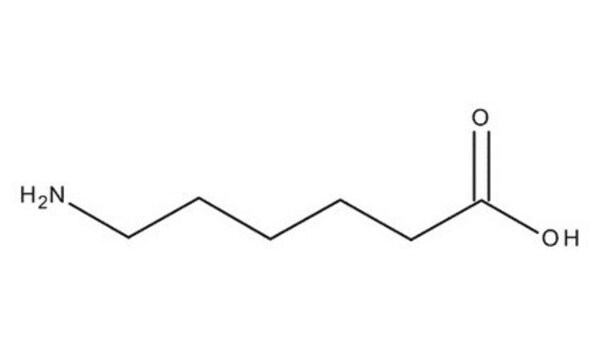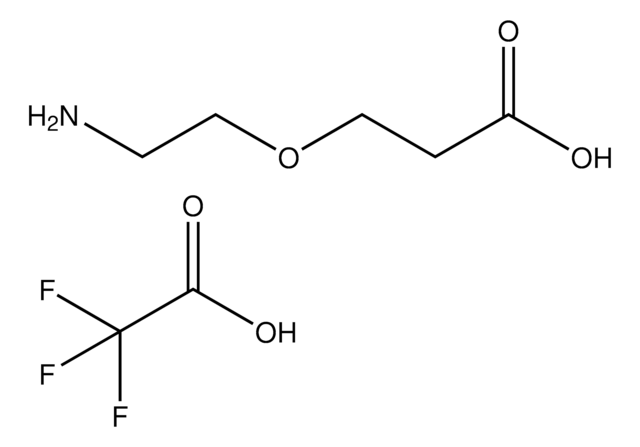Kluczowe dokumenty
07260
6-Aminohexanoic acid
≥98.5% (NT)
Synonim(y):
6-Aminocaproic acid, 6-ACA, Aca, Acp, Aha, Ahx, acikaprin, afibrin, amicar, ε-Aminocaproic acid, 6-Aminohexanoic acid, EACA
About This Item
Polecane produkty
Poziom jakości
Próba
≥98.5% (NT)
mp
207-209 °C (dec.) (lit.)
ciąg SMILES
NCCCCCC(O)=O
InChI
1S/C6H13NO2/c7-5-3-1-2-4-6(8)9/h1-5,7H2,(H,8,9)
Klucz InChI
SLXKOJJOQWFEFD-UHFFFAOYSA-N
informacje o genach
human ... PLAT(5327) , PLG(5340)
Szukasz podobnych produktów? Odwiedź Przewodnik dotyczący porównywania produktów
Opis ogólny
Zastosowanie
Działania biochem./fizjol.
Inne uwagi
Kod klasy składowania
11 - Combustible Solids
Klasa zagrożenia wodnego (WGK)
WGK 2
Temperatura zapłonu (°F)
404.6 - 408.2 °F
Temperatura zapłonu (°C)
207 - 209 °C
Środki ochrony indywidualnej
dust mask type N95 (US), Eyeshields, Gloves
Wybierz jedną z najnowszych wersji:
Masz już ten produkt?
Dokumenty związane z niedawno zakupionymi produktami zostały zamieszczone w Bibliotece dokumentów.
Klienci oglądali również te produkty
Nasz zespół naukowców ma doświadczenie we wszystkich obszarach badań, w tym w naukach przyrodniczych, materiałoznawstwie, syntezie chemicznej, chromatografii, analityce i wielu innych dziedzinach.
Skontaktuj się z zespołem ds. pomocy technicznej







